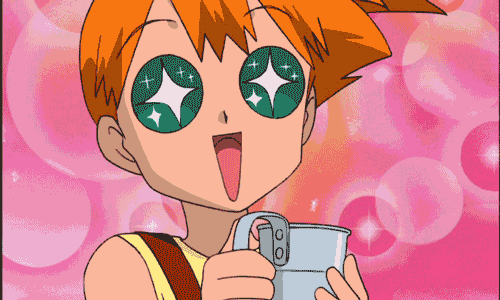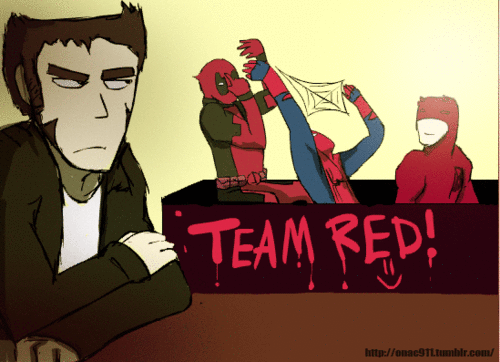Hello all it is I, Sa/Dako, and we have
gathered here today (more like the last week) to watch and discuss
these works from the land of the rising sun (not that the sun rises
only Japan, believe me the sun, or at least that's what science tells
me). So let's begin.
Princess Monon-okay That Was a Darn
Good Film
Are you disappointed at the pun?
Probably. Are you surprised? You shouldn't be. But despite how much
you may want to strangle me for my dumb word-play you have to
acknowledge that unlike me, Princess Mononoke (Mononokehime) was
not disappointing, or at least pretty darn swell. From having some
fantastic art and animation to some powerful female characters,
Princess Mononoke can
be praised on several levels, but
the one I'll be focusing on will be the themes brought out by the
contrasts within the characters..
There
are quite a bit of themes
presented throughout the film, such as man vs. nature, mortal/man vs.
spirits, and the change of the world with old vs. new technology.
Throughout all of these
themes, one of the ways these contrasts were shown were through
characters having almost dual identities, or rather going through
physical transformations in order to show the changes within them.
This applies to most of the main characters, such Ashitaka, San, The
Deer God, and in a way Lady Eboshi. Ashitaka's transformation is
obvious in the manifestation of the wound on his arm; it shows the
struggle between him as a mortal man and the powerful angry spirit
revolting against him.
For
San, she has her dual identity is as both human and spirit/animal.
Being born of human, she has the weaknesses of a human such as her
mortality, lack of physical power, and in ways, her human emotions,
as well as being seen as unequal and even inadequate to other
spirits, and being thought as sick or possessed by other humans.
Despite this, San actively works against her human origins to prove
not only to the other spirits that she is worthy to fight amongst
them, but also to prove to her adopted mother, the God Moro, that she
is useful. She additionally has grown up to see the atrocities
performed by Lady Eboshi on the forest and thus honestly believes in
her cause. Another character that has an obvious transformation, is
the Deer God.
The
Deer God has a literal transformation, making his contrast perhaps
the most obvious. He represents one of the most powerful spirits in
the movie, who is being by Lady Eboshi and the Emperor, the humans.
Thus, his existence is the contrast to Lady Eboshi and the monk to
show the theme of man vs. nature, and old vs. new. Additionally, his
transformation from his physical form into his spiritual form is
representative of mortal vs. spiritual, as well as his death, as
Ashitaka points out at the end that although the body of the Deer God
is dead, the spirit lives on through life and death. On another note
about the Deer God himself, many comment on the creepyness of the
Deer God's face –-
Many
are off-put by the eery, human-like eyes, and suspicious half smile,
and in some instance some have wished it were different. But
something we've talked about, and I will repeat, is how the design of
the face is really important. In looking back at how many viewed
gods, they were seen as powerful and sometimes scary, because humans
are supposed to honor and respect gods, and sometimes that requires a
little fear. And in that sense, the face creates a shock factor for
the audience, which may have been intended.
And
now, we look at Lady Eboshi; although for the most part, she stands
in contrast to the Deer Spirit/ San as the humans with the weapons,
she later herself goes through her own change, as at the end of the
movie, she decides to turn over a new leaf.
After
Moro bites off her arm, she essentially decides it's time to quit.
Perhaps this shows that we should never underestimate the power of
the spirits.
There
are still other transformations, such as those of the boars filled
with rage. But this will be where I end it. Besides the basic
contrast of the characters and themes, there are other things that
contrast about this movie as well. In the first place, many will
agree out of Hayao Miyazaki's films, this is quite the graphic piece.
Also, as Susan Napier points out in Anime from Akira to
Howl's Moving Castle, “The
film defamiliarizes two important icons in Japanese culture, the myth
of th feminine as long-suffering and supportive and the myth of the
Japanese as living in harmony with nature...” (p. 233, Napier) This
shows that Princess Mononoke contrasted
other Japanese films at the time, bringing forth characters that
broke traditional story archetypes
when it was first screened in
Japan.
Grave
of the Fire *cries*
Oh
look at that another pun –- incredible! Anyway,
if my puns don't make you cry from how terrible they are, than this
movie will at LEAST make you consider it. (Unless you're maybe Chloe
cause I don't think Chloe can physically cry at movies) With
the double-hit combo of watching small children slowly die and
watching their still-young older sibling fall into a world of pain,
many leave sad, and wondering about their siblings. But
what makes this movie sad, for
both Japanese and other audiences alike? A lot of reasons and we all
know it.
To
begin with my own experience, one of the things that I feel really
impacted my first viewing of Grave
of the Fireflies (though
this was my second time watching it),
was
the shock factor. I had heard previously from a few friends that it
was a surprisingly sad movie, and so when I heard from my parents
that they had found it on DVD I thought “Why not, it's Ghibli it
really couldn't possibly be that
sad.”
Well,
I was obviously wrong. I'll admit, I didn't physically cry as I very
rarely ever
actually cry at any movies or TV shows, but I was on the inside. I
finished that movie feeling like my heart had been slapped by Totoro
and my brain was trying to figure out how to feel about that. The
fact that GOTF was unlike
other Ghibli movies really
caught me off. Expecting perhaps a mildly sad but touching movie, my
expectations left me like had been run over by the harsh paws of the
catbus. And in this sense I do regret telling many of you beforehand
how sad this was, because maybe than you would have felt this pain.
Another
reason for Grave
of the Fireflies to
release the tears is probably the reality in it. Unlike many Ghibli
films released in America, GOTF took place during a time that
actually occurred in history and had no real fantasy or magic to it.
Without those two things, it gets harder for us to separate from this
movie as well as knowing that this could have really happened. And
for the Japanese audience, this film may have brought back memories
of the war, and personal family stories. Also,
the common of experience of being a sibling, and imagining if one had
to do what Seita had to do. All these were very real situations,
which means there was very little room for viewers to escape and not
feel the disappearance of hope for Seita and Setsuko.
My
final and very important element, is the fact that this film was
animated AND, as Susan Napier said, “...nostalgia for a
disappearing past.” (p. 32, Anime
from Akira to Howl's Moving Castle, Napier)
Often, when people in the West see cartoons they think of kids shows;
and back in the day, Japanese audiences thought similarly. Thus, it
adds to the shock when something like GOTF comes around, taking
something that is in ways associated with children and breaking that
line. And it reminds us of our past, and how responsibilities, like
caring for your dieing loved one, breaks that peaceful past.
In
the end whether you did or did not cry at Grave
of the Fireflies,
this film will always be credited as one of the ones along with Akira
that
helped set the tone in Japan for adult animation. It will always be
considered an interesting look at the interpretation of a time in
history, as well as something you wonder how a 5-year-old would
consider their favorite movie.
IKEA
(Akira)
Alternative
Title: Akir-ious Movie
Did
you get that title? Me neither. Did you get the entirety of Akira?
Probably not. Out
of these three features, Akira
was
the only one I had never seen before, and from experiencing it for
the first time let me tell you what consistently captivated me a
whole chunk of the time –-
THE
ANIMATION.
I
know not everyone liked it, or were really peeved by the style, but I
just remember when I first watched the first scene of when the gang
members enter the bar I was just thinking –-
Like
yo, that lip sync though.
I know for several
reasons why I was so impressed. For one, I was just watching the
fluidity and thought about how many frames
that must have taken. No wonder this movie's framous! Not to mention
when this was made, which earns itself some mad cred. Nothing
digital, and for anime, pretty early.
Other
than the animation, I still thought it was interesting at points. It
definitely had its weak spots, like character backstory,some
explanations (like the pills) and why Tetsuo's forehead is like its
own continent –- but overall, it was interesting and definitely a
cult film. I did really love the shots, and animation of the
buildings. My final word would probably be, that it feels incomplete,
at least story wise for what they give in the movie. I could see some
people liking the mystery left by the gaps in characters in a weird
sense but after hearing about Sydney speak about the manga, (which I
now intend to read whenever I can collect me some time) I know
there's a lot more in-depth story buried under all that Tetsuo. But
until then, the movie. Despite its fallbacks, I also can still see
how this film really impacted so many anime and western film today
(not Kanye though) and give it mad respect for that. It jumpstarted a
generation and paired with Grave
of the Fireflies really
set the possibilities for mature and interesting animation. Overall I
say I enjoyed it, though I really look forward to the manga for
filling in gaps.
Let's
just hope that there really isn't anything under that stadium though.
Did
I do ok? I hope so. I also wish we had some more time for this
section, but I guess time just kinda doesn't let things happen. Well
it was fun having this venture, looking through movies I've already
seen and also watching what looked like a bunch of psychic green
benjamin buttons and motorcycles. Till next time friends~







































